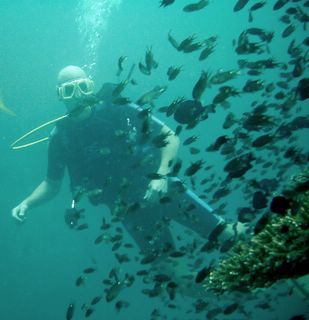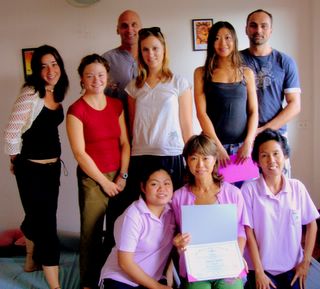Some personal observations from the past seven months of traveling and reading…
“One World” – In the mid-1980s, after participating in various exchange programs (Kenya, Thailand, and Poland) I was enamored with the concept of “One World”. “One World” centers on the belief that people are basically the same throughout the world - they want to be happy, live in peace, raise families, and lead productive lives. What make them different are generally not innate but learned differences - learned through their own culture, traditions and religion beliefs. Overtime these learned differences between countries and their cultures tend to shrink and merge – facilitated by such things as cheap travel costs, information technology, the internet, TV and movies, cultural awareness and education . The result is a single culture or “One World”.
After this trip I still believe in the concept of “One World” (a.k.a. “globalization” in economic parlance), albeit, this trip made me realize that the reality of a single culture is a lot further away than I previously surmised - decades, even centuries away. There are a lot of uneducated, poor, immobile people in the world that still maintain their own culture, tradition and value systems.
Population and Environment – Sitting on the truck, driving through country after country, city after city, village after village - seeing people, after people, after people - I repeatedly pondered - how many people can the earth sustain? There are a lot of people who live on this earth. Another pondering after seeing plentiful evidence of air pollution and water pollution, and piles of garbage was - how much more can the environment sustain?
Syria and Iran – Originally, mostly based on western news reports, I thought that the Syrians and Iranians might be unreceptive or possibly even cold towards western tourist, in particularly American tourist, me. This was clearly not the case. The Syrians and Iranians that I encountered were extremely friendly and very helpful. It seemed to be part of their culture. Albeit, many Iranians were also quick to distinguish between American people and American politics. They made it a point to say they liked American people, but not American policies. I think the opposite is also true for most Americans. Additionally, some Iranians expressed fear that American would occupy Iran, similar to Iraq. They feared for themselves and their families. A legitimate yet weighty fear to live under. At the other extreme, there was one Iranian who supported recent American government actions because it rid Iran of two of its worst enemies the Taliban to the north and Saddam Hussein to the south.
Concubines and Slaves – Until this trip, I must admit I was a little naïve, I never realized what a major role multiple wives, concubines and slaves played in the history of the world. For example, I would marvel at the great monuments from previous civilizations - like the Egyptian Pyramids, Taj Mahal, Ankor Wat, Great Wall of China, Percepolis - and ponder how they were built without modern day construction equipment – the answer is easy slaves.
Today, the concept of multiple wives, concubines or slaves seems so appalling and inconceivable that they were so common just a few hundred years ago. I wonder what cultural institutions are in place today that in a few hundred years from now civilizations will look back and be appalled?
Borders – Another ‘back-of-the-truck” pondering centered on country borders. The historical function and necessity of borders is clear, yet the characterizations of borders seem so arbitrary and limiting. Many borders are often defined by natural boundaries or were defined historically and never changed. Are these good reasons to retain the same borders? Possibly so for the lack of a better way to define boundaries, however, the definition of what a country’s border implies is somewhat outdated. My guess is that individual country borders will ultimately be deemphasized and more emphasize placed on geographic regional borders. This is not an original pondering, but an extension of conventional wisdom. The trip has made it a bit more pronounced in my eyes.
A good example is the EU. Citizens of the EU can freely travel, live, or seek employment in any country within the EU regardless of their country of origin. The “United” States of America is based on the same concept, except instead of countries the founding parents decided on states. The concept is the same; the nomenclature is slightly different. Southeast Asia countries could also benefit by some regional mobility, as would the Middle East. Nevertheless, it would be harder to realize in the Middle East because of the ownership of oil resources defined by borders.








